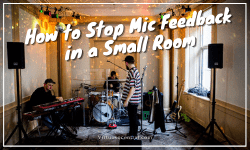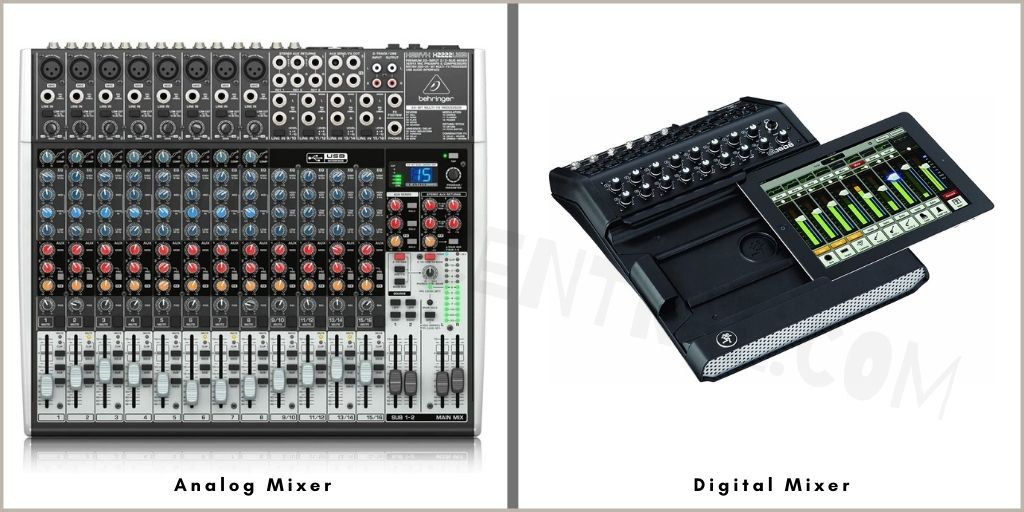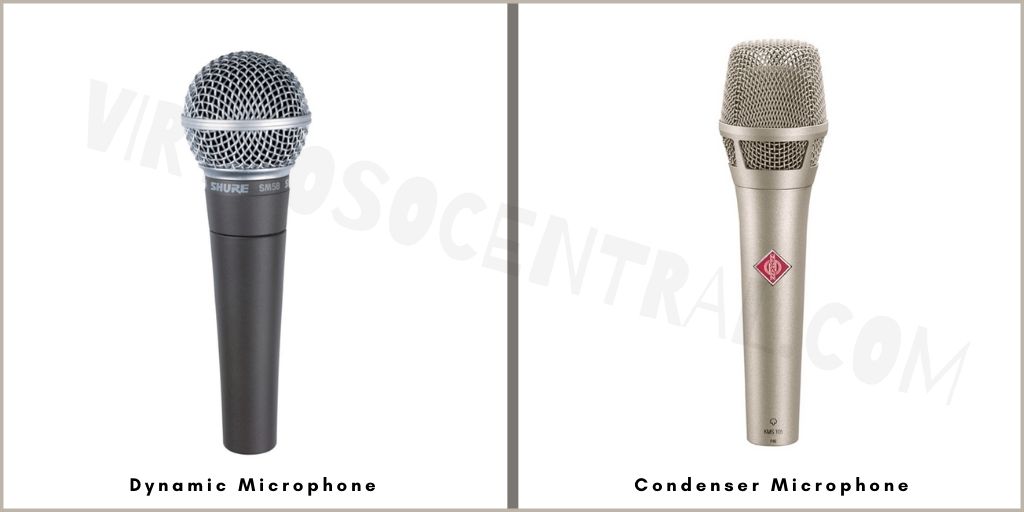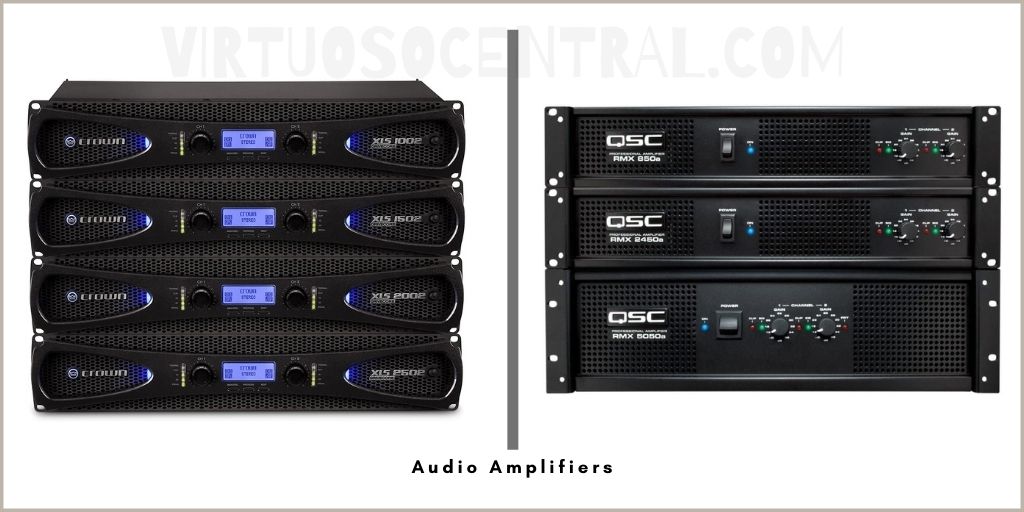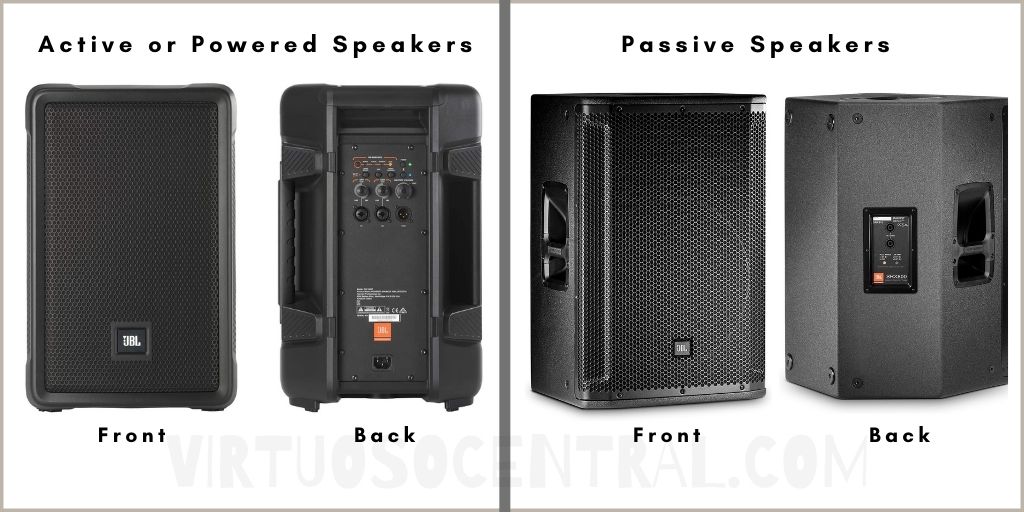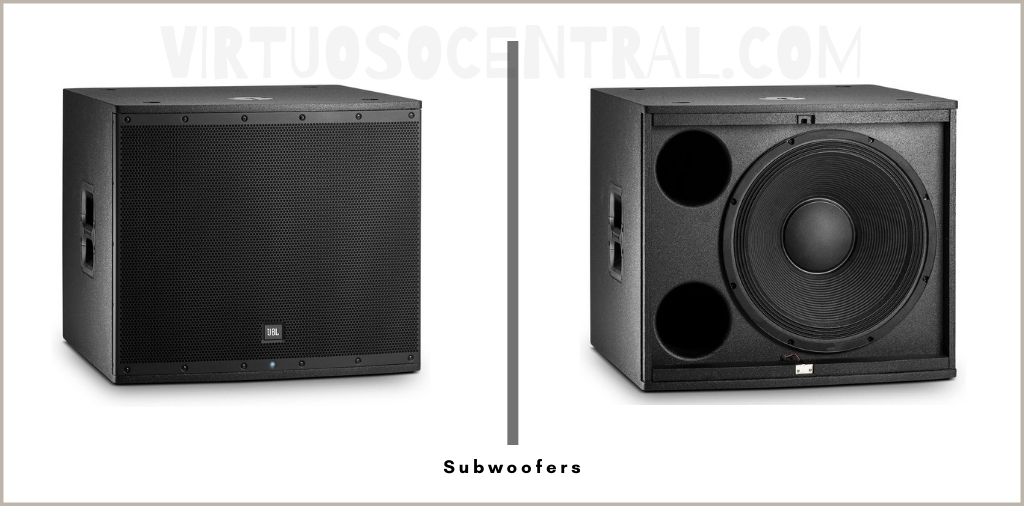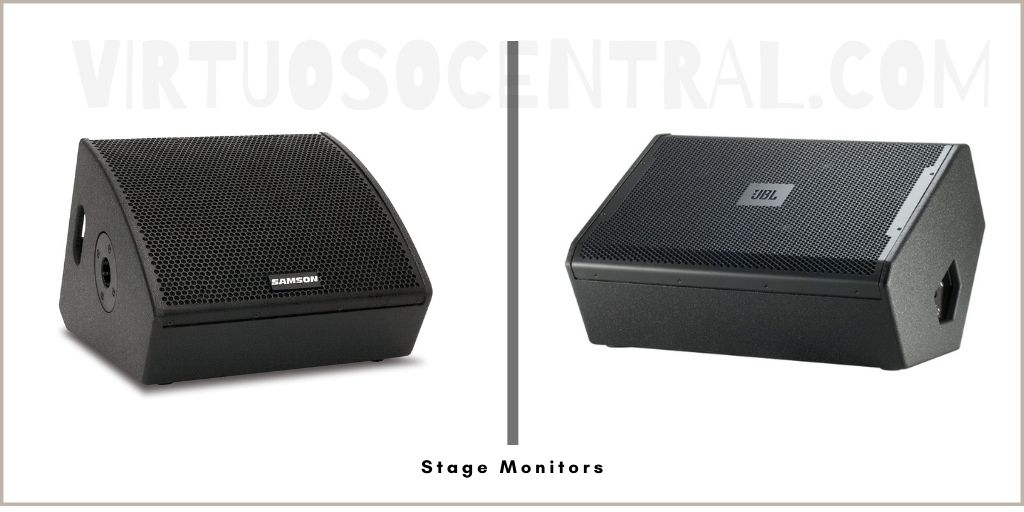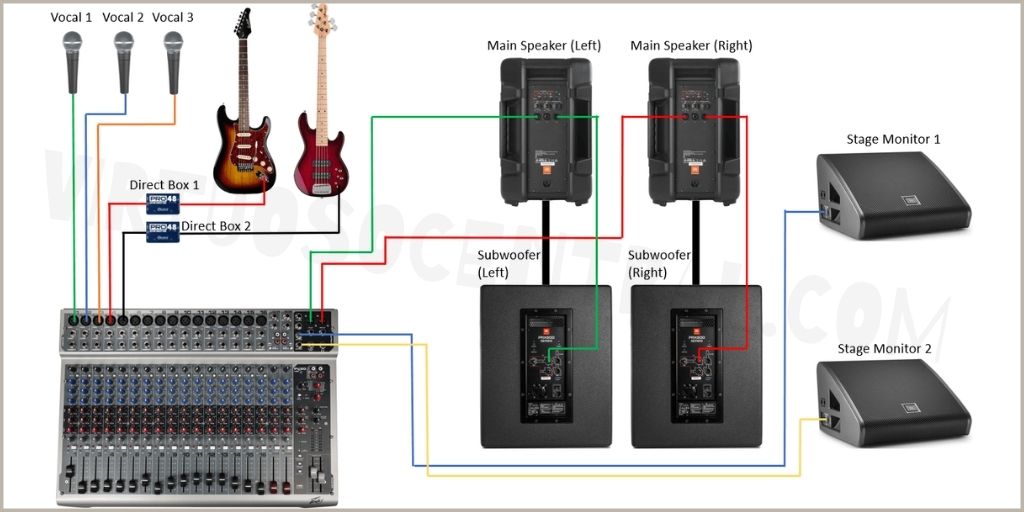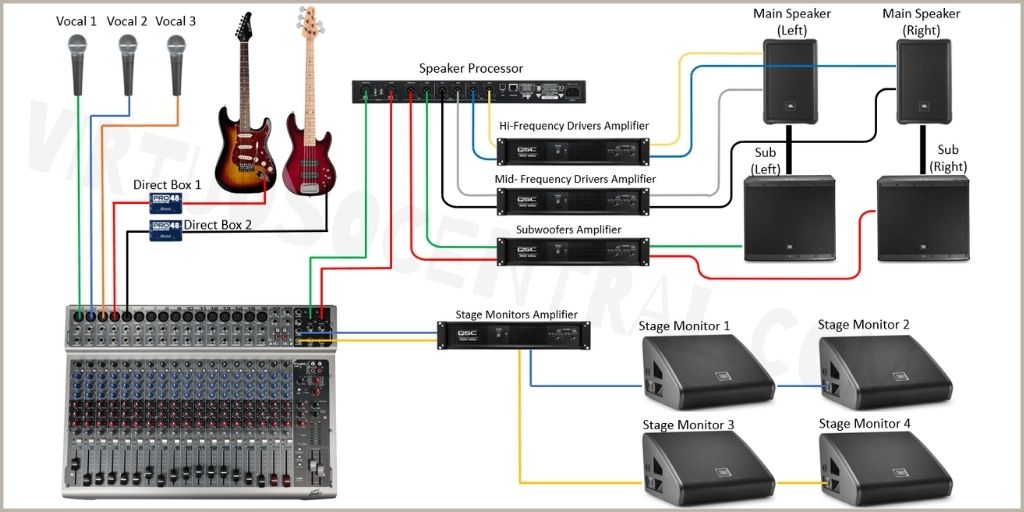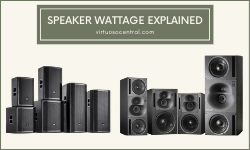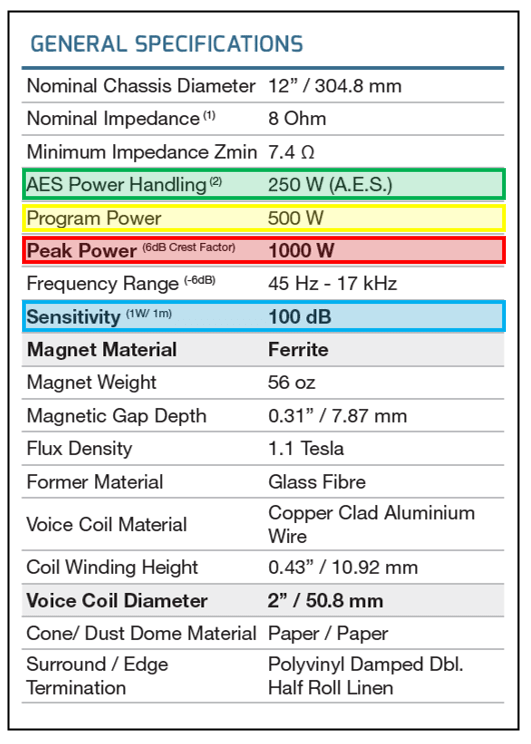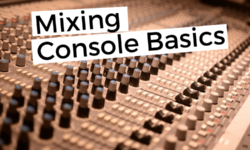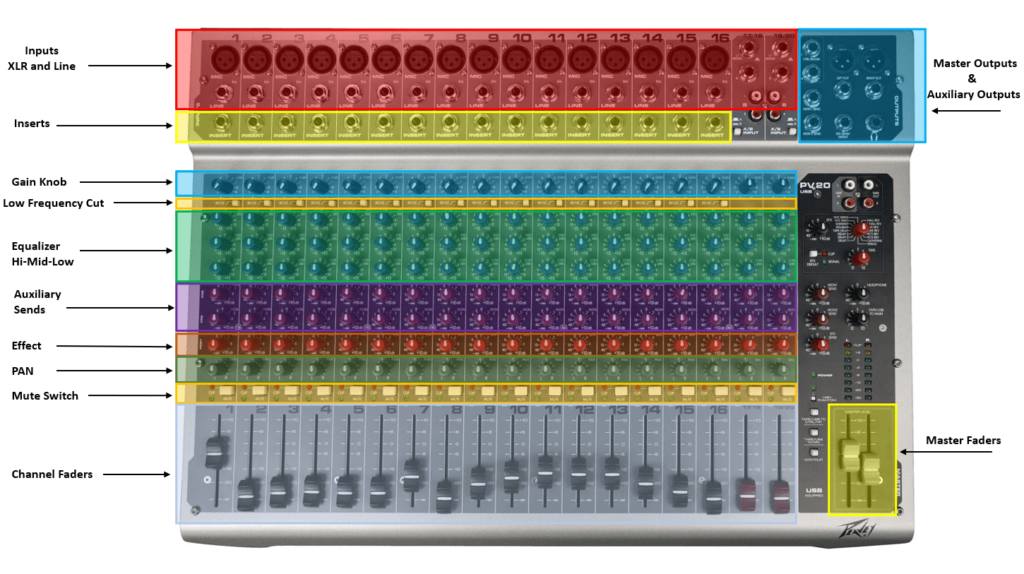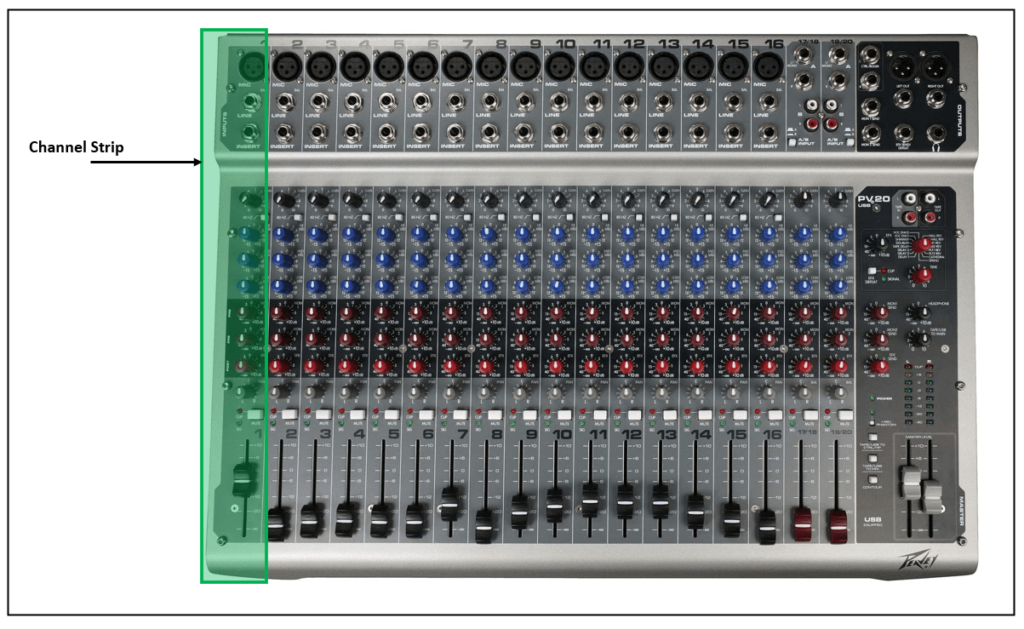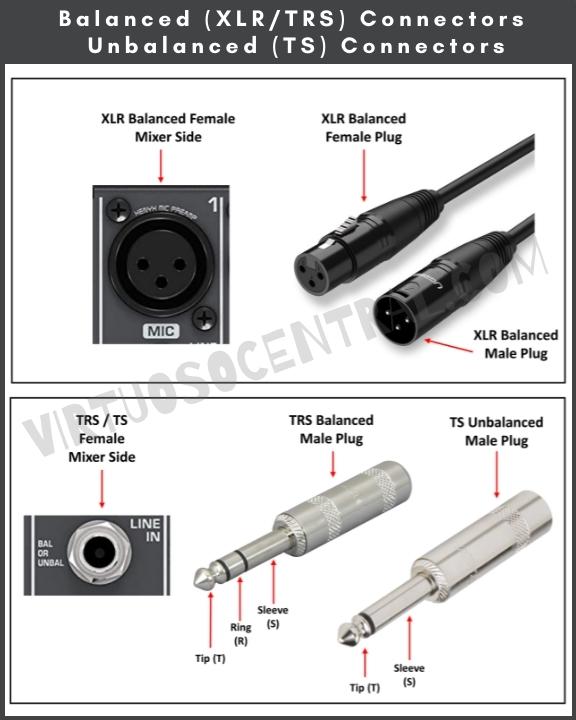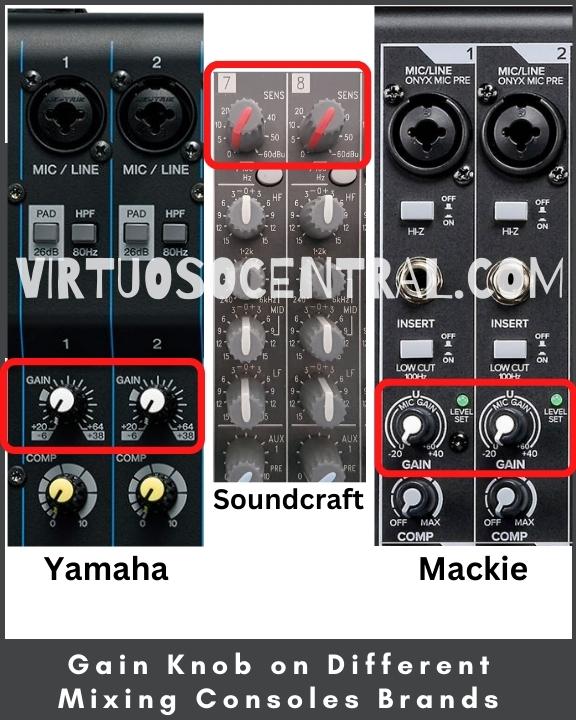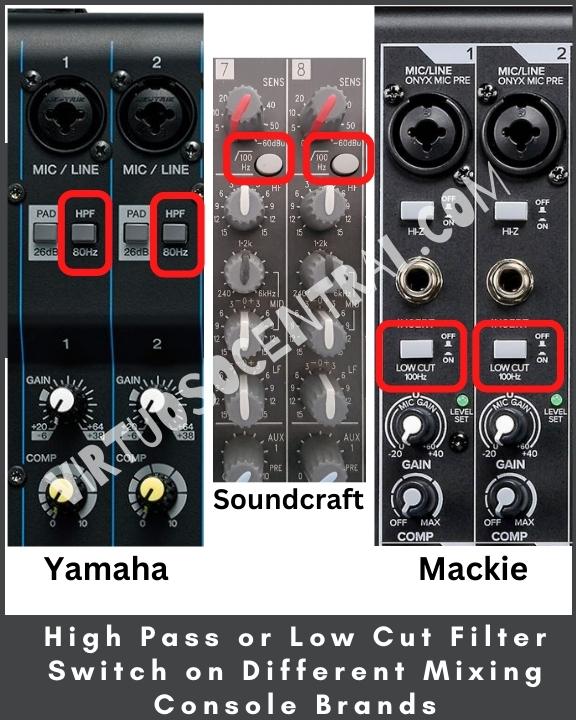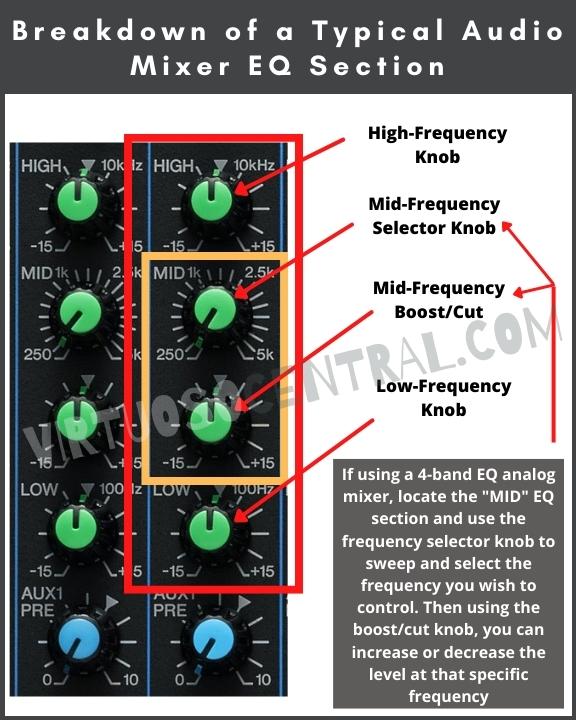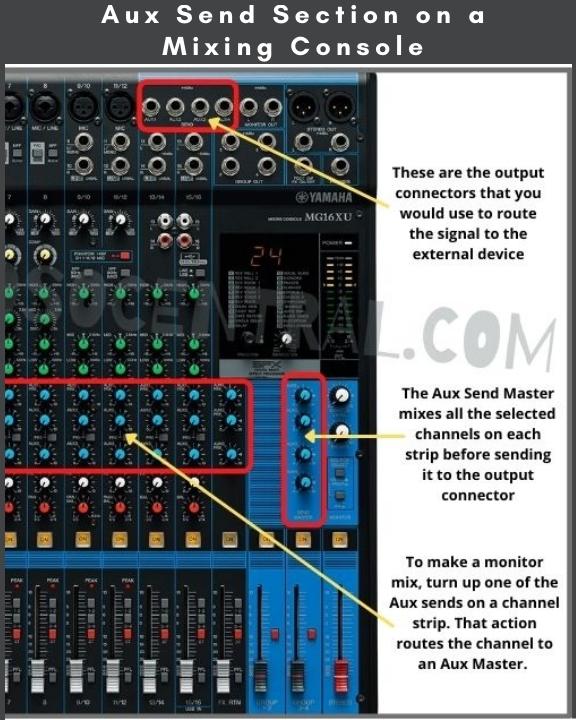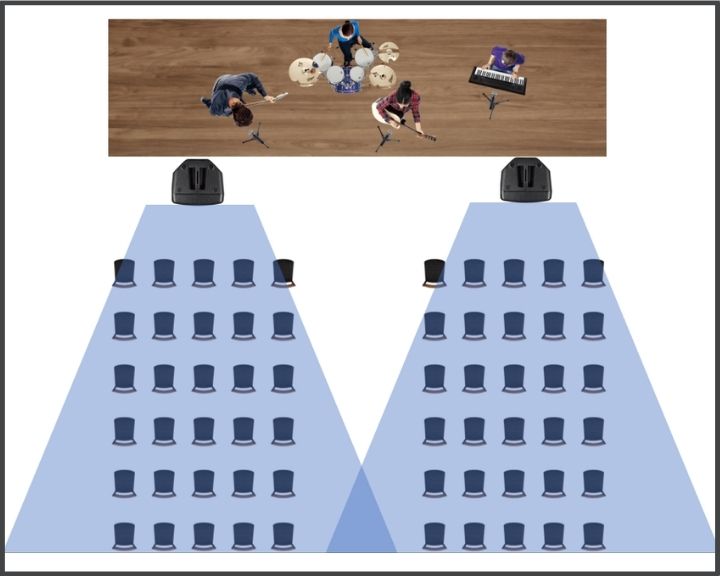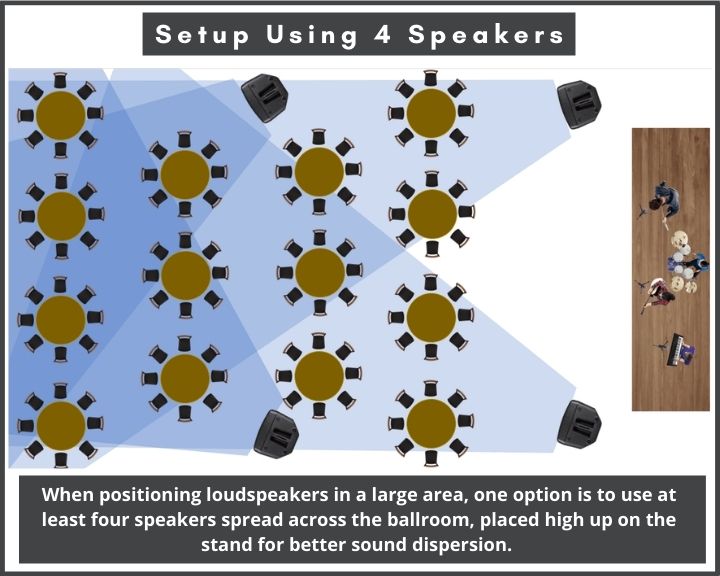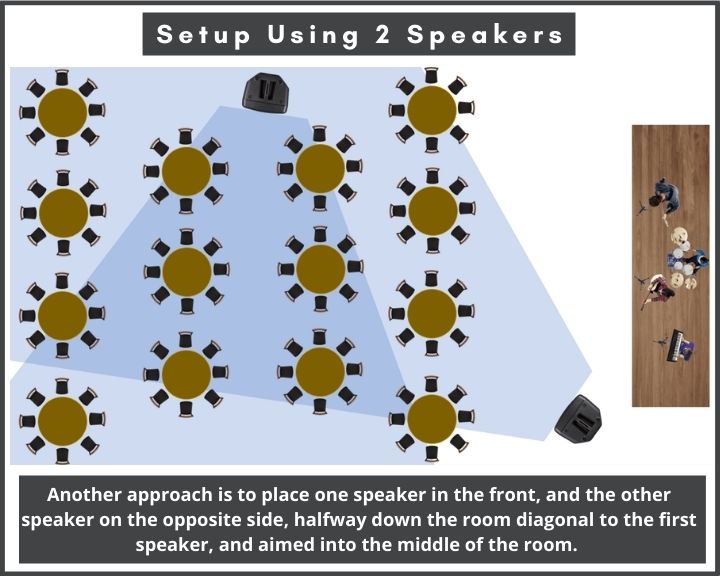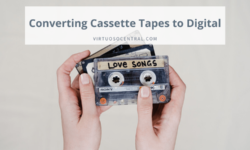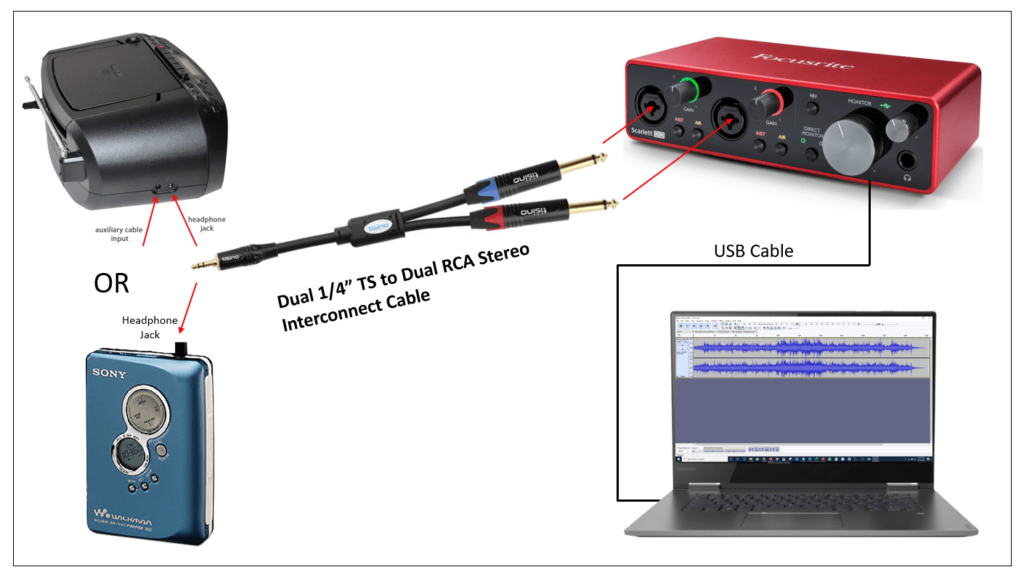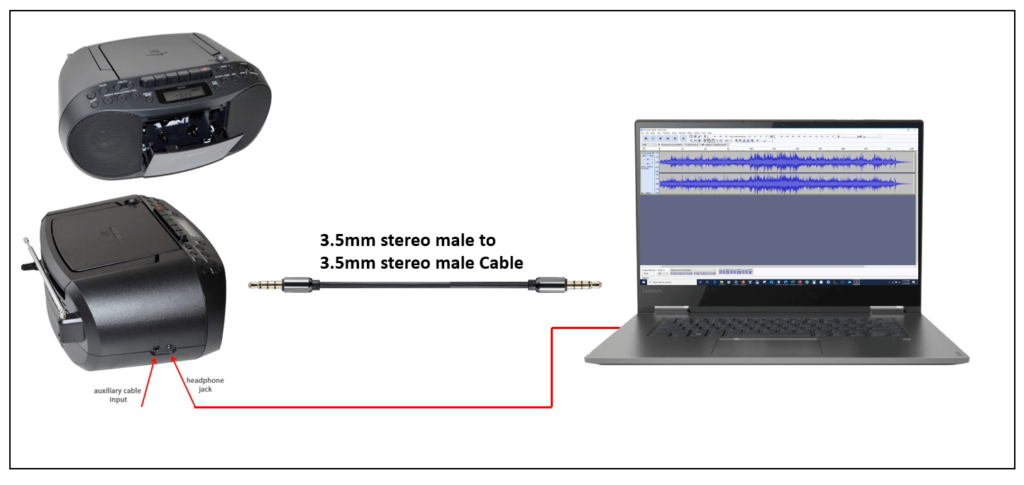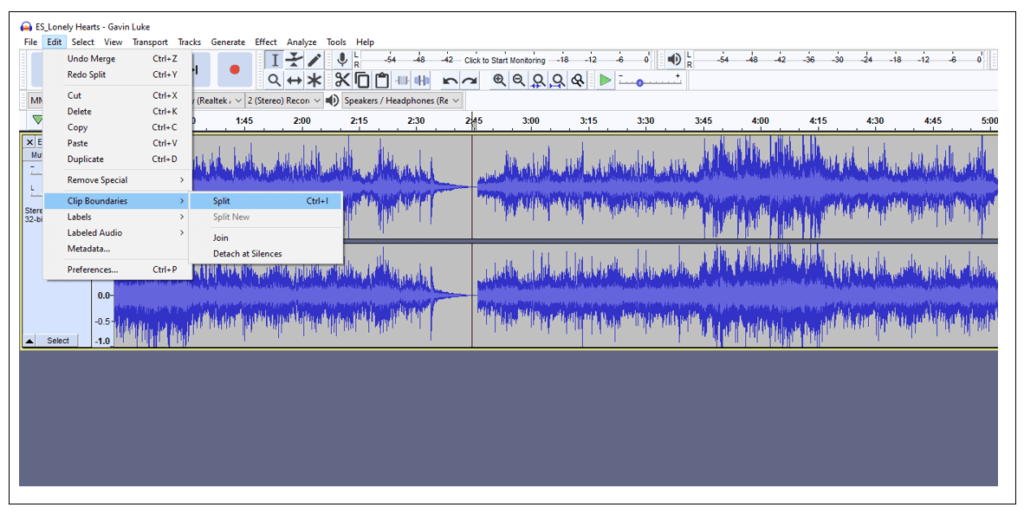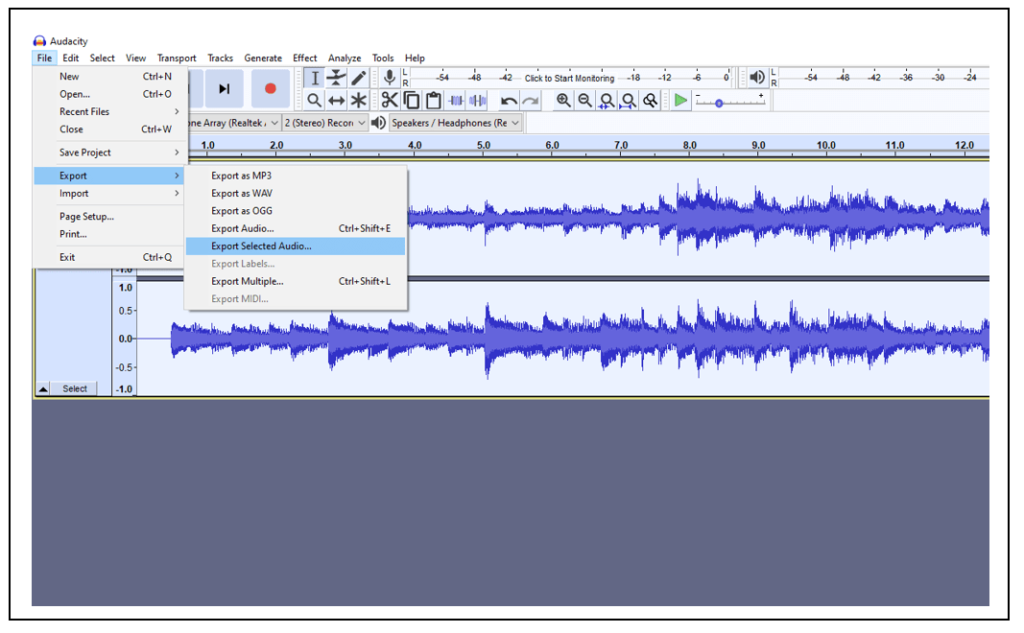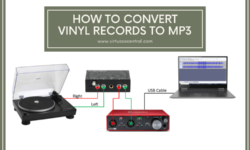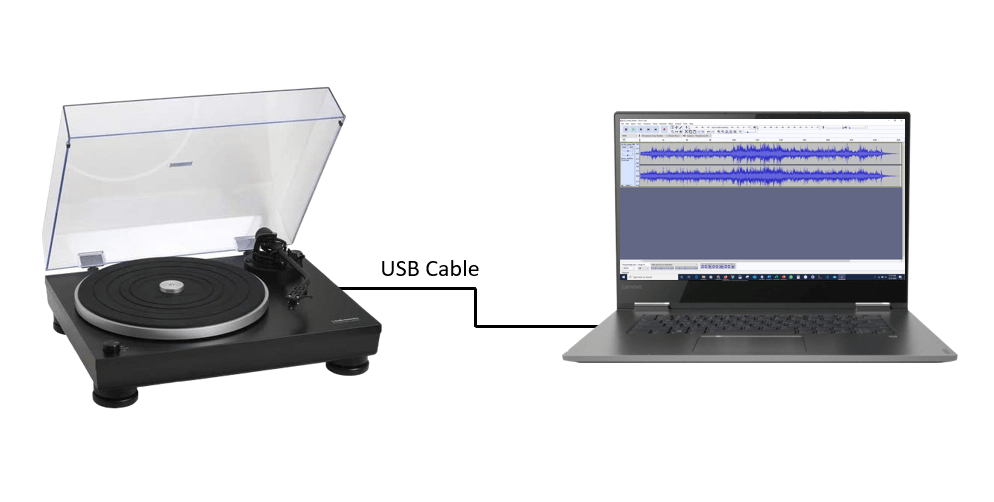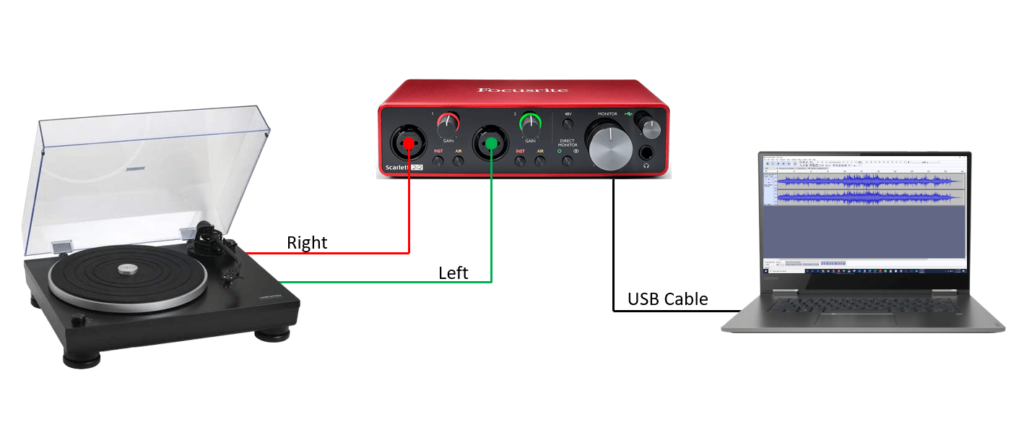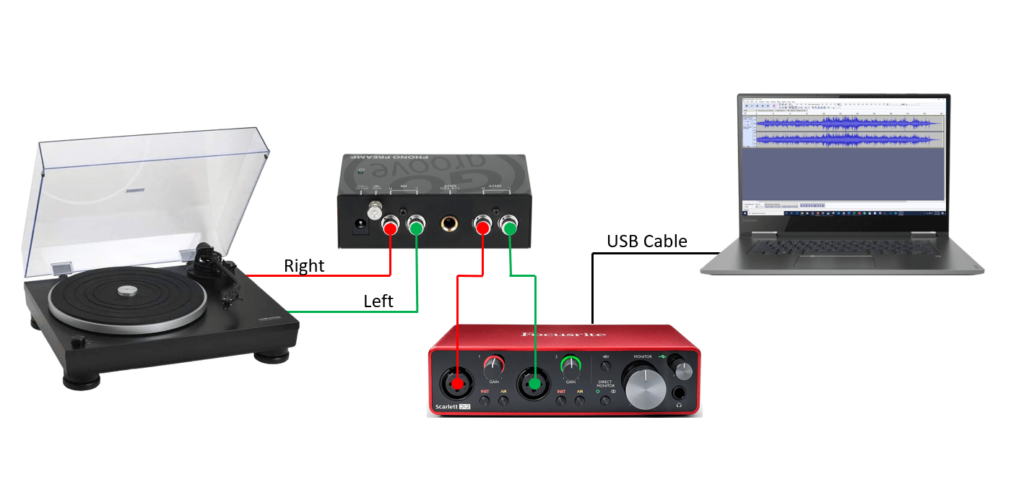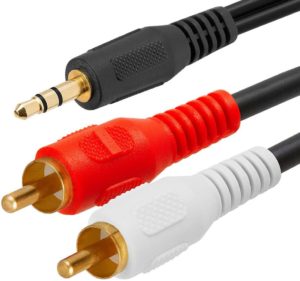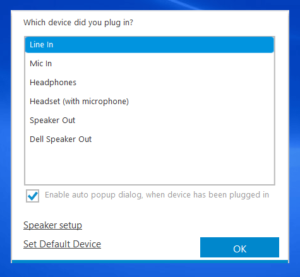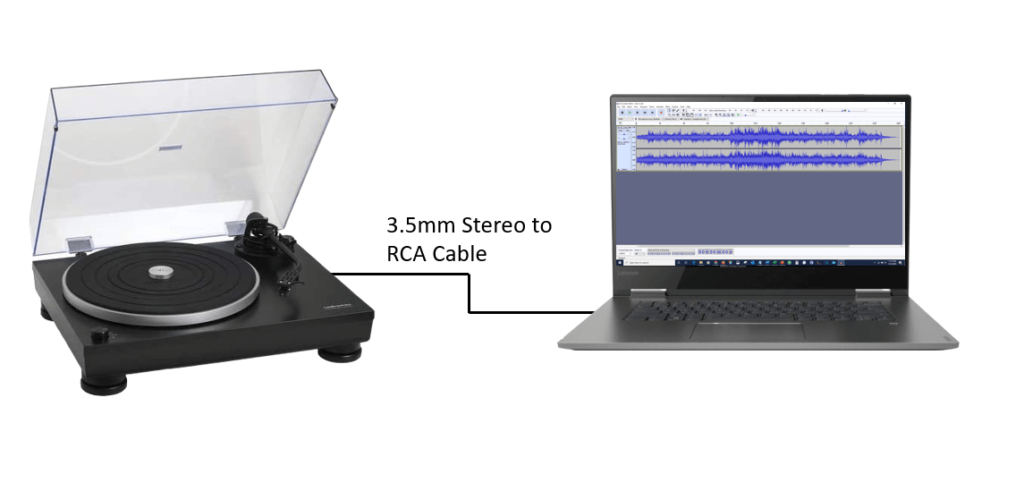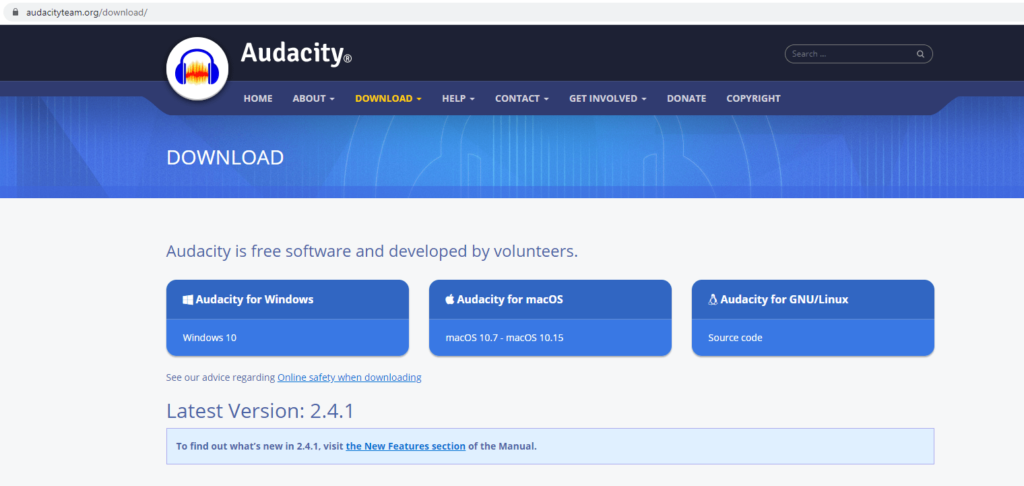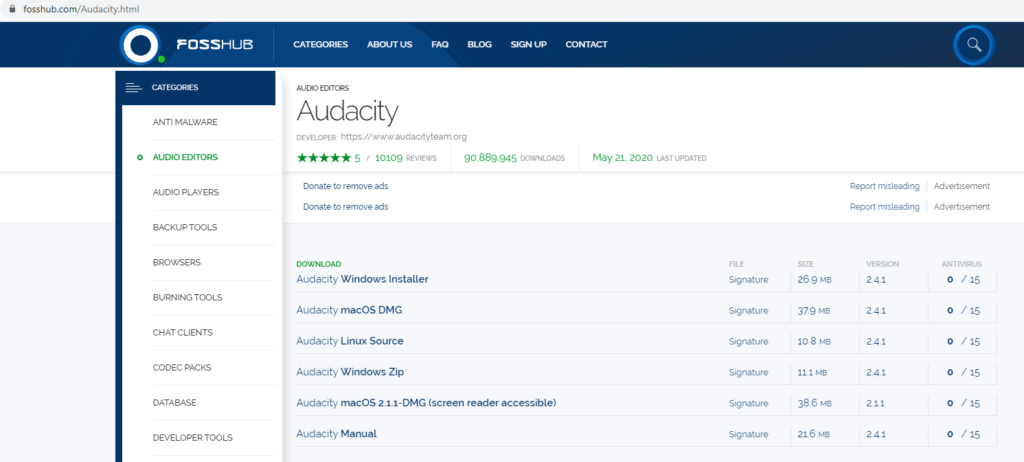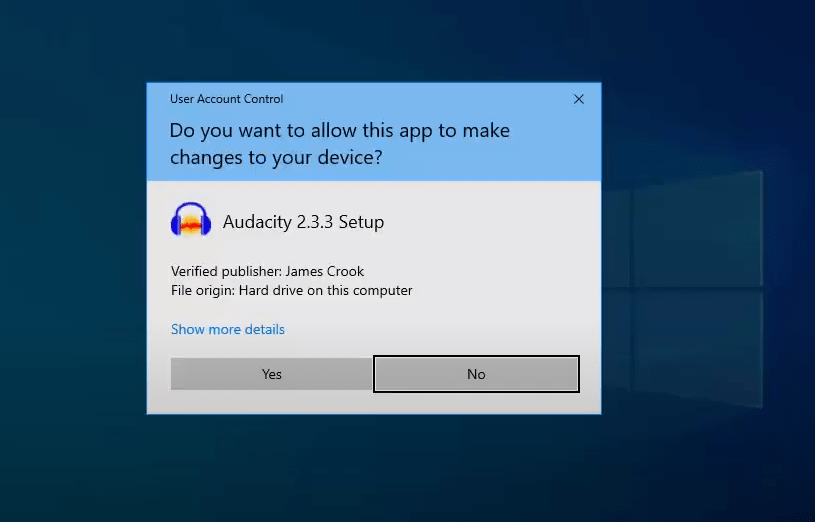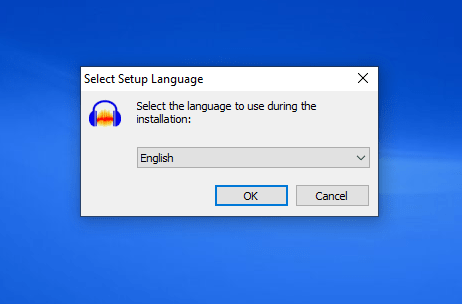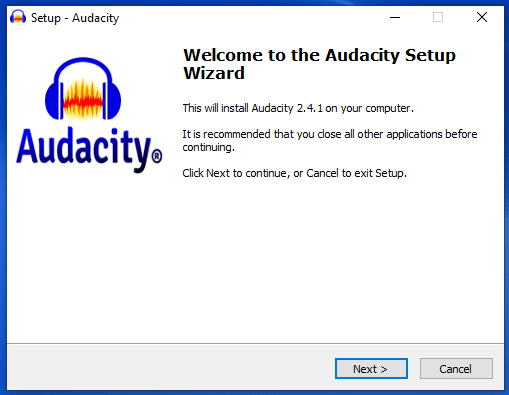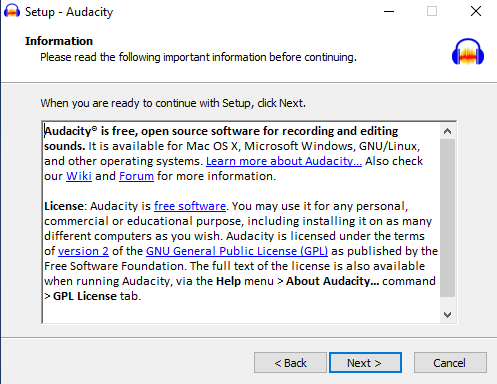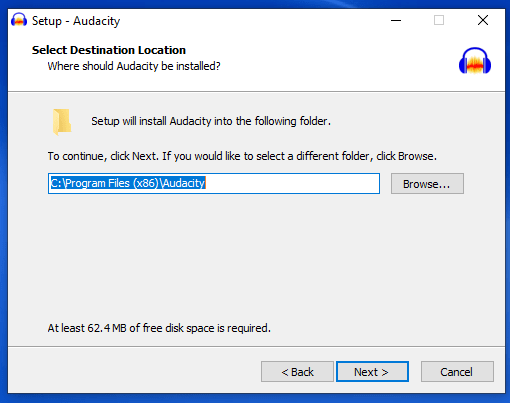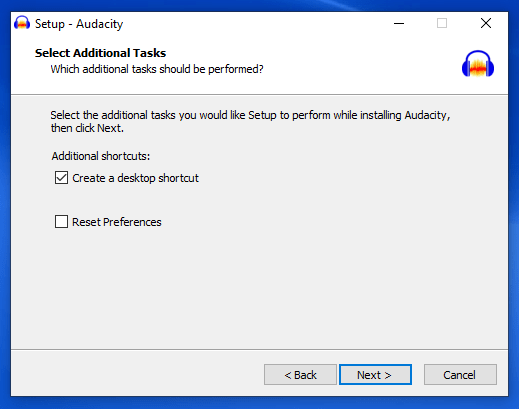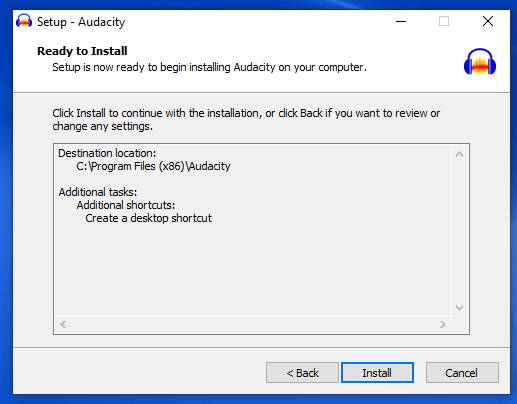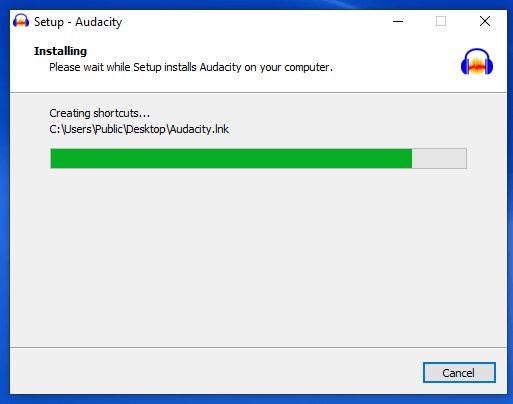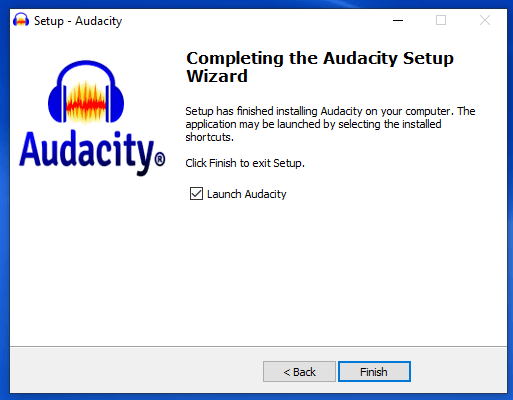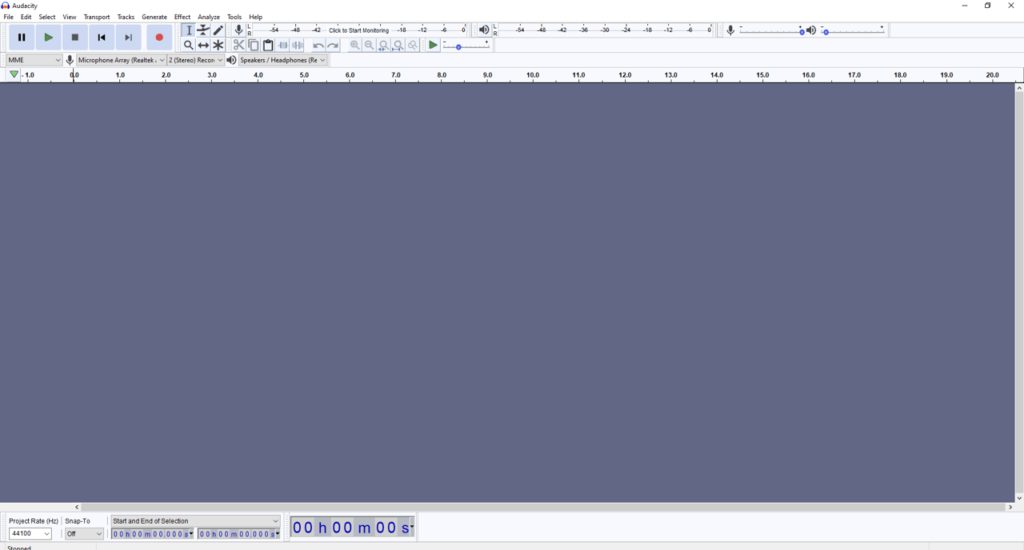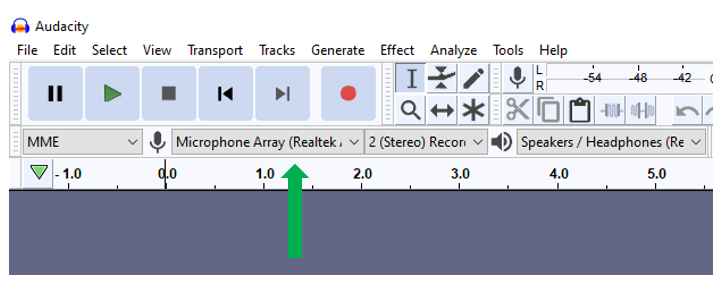If you’re new to the audio world and trying to figure out which PA sound system would work best for you, you’ve come to the right place. When it comes to active and passive PA speakers, people often question which would be the better choice for their situation.
In this article, we’re going to help you narrow that down. We’ll be presenting the differences between active and passive speakers, the pros and cons of each one, plus we discuss which one is better, so you’ll be able to get the right PA sound system for your needs.
Active vs. Passive speakers: What’s the Difference?
The main difference between active and passive speakers is that active speakers have a built-in power amplifier. Passive speakers don’t; they rely on external amplifiers to produce sound.
Now, there’s more to it than that, so stick with me. With active PA speakers, you’ll need a power source for the unit. You’ll either plug into a wall outlet or choose a battery-operated system. With a passive PA speaker system, you need your own amplifier to operate.
There are a couple of things you’ll want to know before jumping in, so let’s look at things to consider if you’re thinking about active PA speakers. But before we continue, we need to understand some basic terminology.
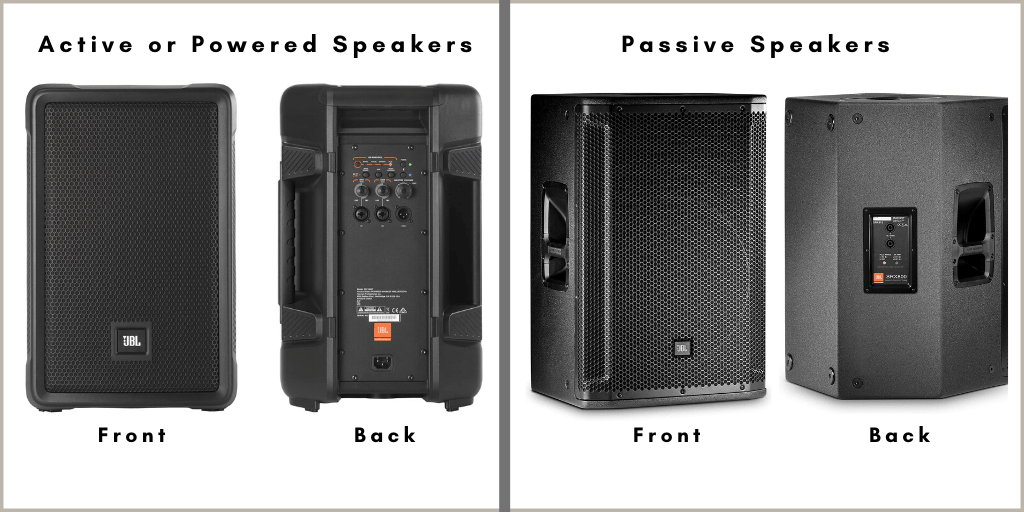
Basic Terminology Before We Continue
If you’re new to this, some of the different terminologies can be confusing, so I’m going to quickly cover a couple of basics that you’ll see a lot. Feel free to pop to the next section if you’re up on these terms.
Line-level: this comes down to the strength of the signal and moves between the different pieces of equipment you have. Now, line-level and mic-level are different, but we care about line-level right now, which is just about 1 volt.
Drivers: these are the speakers in your sound system. In PA systems, there are two main categories woofers and tweeters. Woofers handle low and mid frequencies while tweeters take care of high frequencies. Both basically take the signal and turns it into sound waves.
Crossover component: when you put one input signal into a piece of equipment, it goes in, and the crossover network splits it in two or more frequency ranges. Namely Highs (Tweeters), Mids (Mid-range woofers), and Lows (Low-range woofers or subwoofers)
Pros and Cons of Active PA speakers
Okay, now that we got the basics out of the way, let’s look at what you need to know when it comes to PA speakers. You’ll generally hear of two types, active and passive speakers. What’s the difference?
Let’s take a balanced look at active PA speakers to see if these are the right choice for your audio needs.
When you’re weighing pros and cons, it’s easy to get pulled into one piece of information, but think about what situation you’ll be using the speaker system in, and will it change? Do you move around a lot? Do you need ease of use? How much will it set you back? Only you know what your circumstances are.
Pros
- Active speakers are quick and easy setup. Think plug and play. They offer an easy, out of the box answer.
- Simple to adjust. You don’t need to be a master sound engineer. Great if you don’t need all the bells and whistles.
- With active speakers, you get lots of options. You can find portable designs that offer different power options, such as plug-in or battery-powered units.
- All-in-one-system. Your amp needs are there, simply plug in your line-level signal, and away you go.
- Simple solution. One piece of equipment with no need to match up your speakers to your amps or need to worry about getting the right amp.
- It gets the job done.
Sounds great, right? Slow down, my friend. There are some things you’ll want to think about. Let’s look at a couple of reasons this might not be the right choice for you.
Cons
- Let’s face it, they’re heavier since the amp is built into the unit. What that means is if you’re moving around a lot, it could be inconvenient.
- Reality check. If one of the parts breaks, you can’t simply swap out that one piece, and it can be costly. If it goes, your entire system just went.
- If the system is not battery operated, you need to be near a wall adapter, which can limit your setup.
- If you play in large venues, passive PA speakers might be better.
In general, an active PA speaker system is the right choice when you’re looking at smaller venues. It will also be the right choice if you move around a lot like a traveling DJ or if you’re a speaker.
Active speakers are great for in-house systems that aren’t too big. Churches and cafés are great examples of places where they work well, or maybe you’re somebody who plays acoustically at local events. In this case, active PA speakers are a great, easy choice.
With those things in mind, let’s check out passive PA speakers.
Pros and Cons of Passive PA Speakers
Pros
- They tend to be lighter in weight than powered PA speakers because there isn’t an amp built-in
- You have a central control where you have more customization
- Since the speakers and amps are separate units, when you want to scale up later, you don’t have to replace the entire system
- You can see what’s going on easier, as an active PA speaker encloses the amp, and you can’t fully see what’s there, so you aren’t always sure of the quality of the equipment
Cons
- Sometimes it’s hard to know how to match the speakers and amplifiers if you don’t have the knowledge.
- If you have too much distance between everything, you might get some signal loss
- More equipment to pack up/set up
- If you get amps which aren’t compatible, it can cause problems
Connection Diagram for Active Speakers
Active speakers are easy to setup. Plug the power cord to an outlet, then connect them to the mixing board’s main output with a cable, and you are set. You could also connect powered speakers wirelessly for having a more convenient setup free of wires.
The following diagram illustrates how to connect active speakers to an audio mixer, use it for your reference.
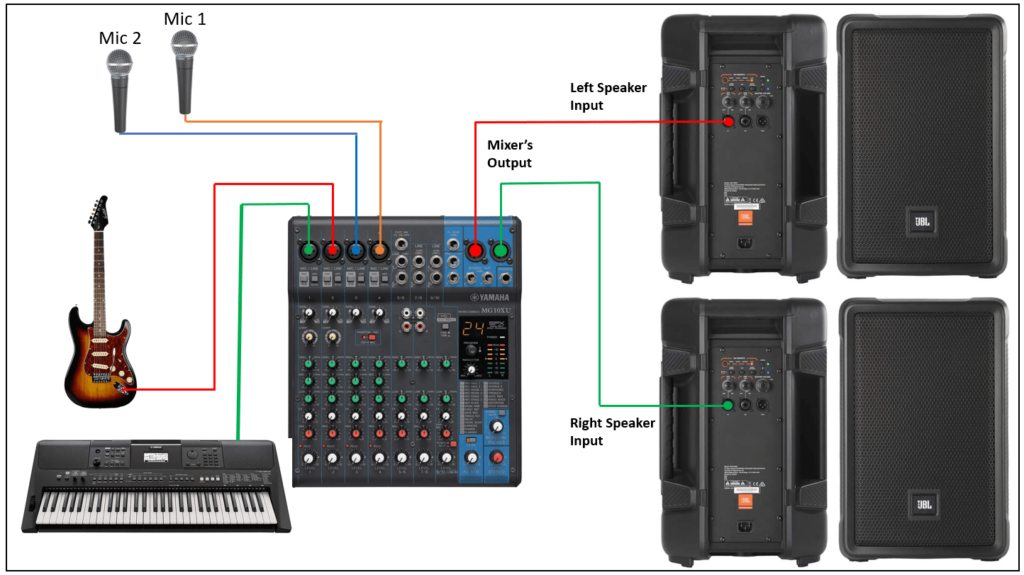
READ: How to Connect 4 Powered Speakers to a Mixer
Connection Diagram for Passive Speakers
Passive speakers take more work to set them up. First, you need to place your speakers in the venue. Then you need to set up the amplifier and connect it to the mixer. Once that’s done, lay down the cables from the amp to the speakers.
When using passive speakers, you need to carry more things with you and make sure that the speakers are correctly matched with the amplifiers you are using.
The following diagram illustrates how to connect a passive PA system.

READ: How to Set Up a Stage Sound System
Which is better? Active or Passive Speakers?
It’s not a matter of right or wrong, but more of looking at how you’ll be using the speakers. Each type of PA speaker offers different things worth considering.
Active PA speakers can be a simple, all-in-one unit that offer an easy, plug-in answer. But, there are limitations.
Passive speakers need something else to send the signal through them. You need an amp, mixer, or cables to get going. First, the signal comes from your mixing console; it goes through the amp, then the amp pushes the signal and sounds out through the speakers.
That original signal gets broken down into smaller bits before going to where it needs to be. With a passive PA speaker, your line-level signal needs to first go through an amplifier. Why? It increases the signal before it goes to your speaker. In this case, the amp powers the speakers. Without the amp, there is no power to passive speakers.
Okay, so those are the basics. Your first instinct may be to grab an active PA speaker, but there are things you’ll want to consider. There are benefits to choosing a passive PA speaker you might want to explore.
READ: Mixing Consoles Basics
When to Choose Passive PA Speakers
One of the big things to keep in mind when choosing speakers is knowing how you’ll be using the system. So, knowing when to choose passive PA speakers and when to choose active comes down to some basics.
Passive PA speakers are popular with people who play live music. They’ve been doing it that way for a while, and they work really well in medium to large venues. If it’s a place that gets used a lot, it’s nice to have a good system set up and in place. Now, if you need to move things a lot, it may not be the best choice.
On the other hand, consider the scalability factor. Are you going to outgrow your active PA speaker too quickly? When it comes time to upgrade, when you chose passive PA speakers, you only have to upgrade one piece, not the entire system, which saves you money. Also, if you want to add things later, like sub-woofers, it’s easy with passive.
READ: Speaker Wattage Explained
Final Thought
So, there you have it. Both will get the job done, but how you do it, the cost and other factors like portability and the size of the venue all come into play when you’re considering a PA sound system.

